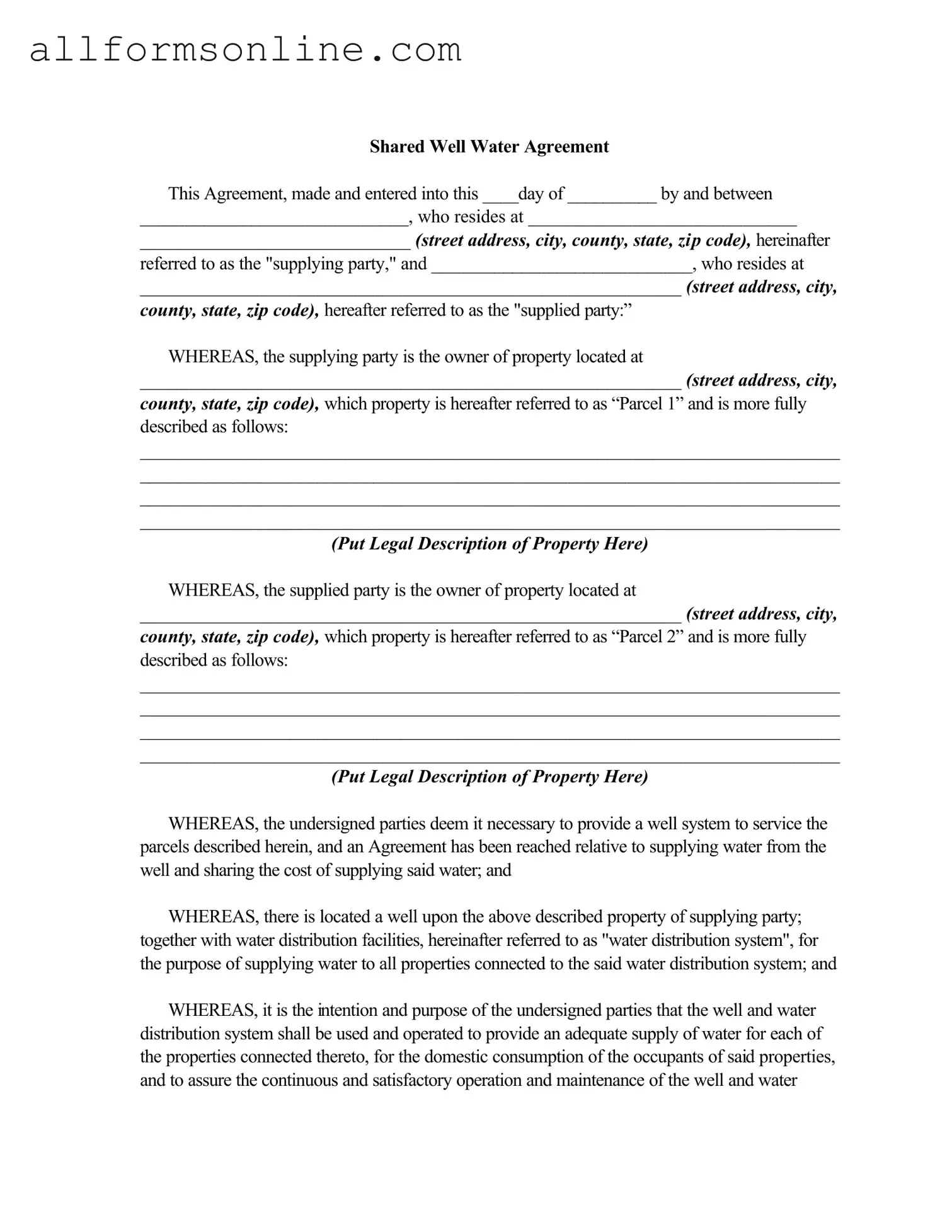What is a Shared Well Agreement?
A Shared Well Agreement is a legal document that outlines the terms and conditions under which two or more parties can share a well and its water distribution system. This agreement specifies the rights and responsibilities of each party regarding the use, maintenance, and costs associated with the well, ensuring that all parties have access to water for domestic use.
Who are the parties involved in a Shared Well Agreement?
The parties involved in a Shared Well Agreement typically include the "supplying party," who owns the property where the well is located, and the "supplied party," who receives water from that well. Each party must provide their respective property addresses and agree to the terms of the agreement.
What are the main responsibilities outlined in the agreement?
The agreement details several key responsibilities. Each party must pay an annual fee for the use of the well and share the costs for maintenance and operation. Additionally, they must promptly repair and maintain the water pipes serving their properties. Consent from all parties is required for any expenditures related to system maintenance, unless it’s an emergency.
What happens if one party does not pay their share of costs?
If a party fails to pay their share of costs for energy or maintenance, the supplying party has the right to terminate water supply until the overdue payments are received. This ensures that all parties remain accountable for their financial obligations under the agreement.
Can the agreement be terminated?
Yes, the agreement can be terminated. However, this requires a written statement of termination to be filed with the appropriate county office. Once a party terminates their participation, they will no longer have the right to use the well and must disconnect from the water system. The costs of disconnection are the responsibility of the terminating party.
What happens if the well becomes contaminated?
If the well becomes contaminated or no longer provides adequate water, the rights and obligations of the parties under the agreement will cease. In such cases, the parties may seek an alternative water source, and a reasonable time will be allowed to make necessary connections to that new source.
How are disputes resolved under the agreement?
Disputes arising from the Shared Well Agreement are to be resolved through binding arbitration. Each party selects an arbitrator, and those arbitrators choose a third. The arbitration process is governed by the rules of the American Arbitration Association, ensuring a fair resolution to any conflicts that may arise.
